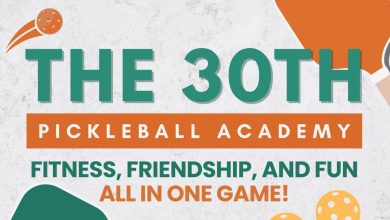Pickleball Equipment Market Seen to Grow with the Sport in the Years Ahead

The pickleball equipment market is estimated to be valued at USD $702.9 million in 2025 and is expected to reach USD $1,848.1 million by 2032, exhibiting a compound annual growth rate (CAGR) of 14.8% from 2025 to 2032.
A new report by Coherent Market Insights titled “Pickleball Equipment Market Size 2025” provides insightful information about regional and international markets that are anticipated to expand between 2025 and 2032. This thorough study looks at the competitive landscape, value chain analysis, major market segments, geographical trends, and changing market dynamics. It also offers a thorough analysis of the forces and limitations influencing the market.
As a vital resource for business experts, legislators, stakeholders, investors, and newcomers, the study also identifies successful tactics and promising prospects. They can discover strategic methods, investigate market growth prospects, and obtain a competitive advantage in the Pickleball Equipment by utilizing these insights.
Pickleball is growing in popularity due to its accessibility for players of all ages and abilities. According to USA Pickleball Association, the number of pickleball players has grown exponentially from around 3 million players in 2019 to over 5 million players in 2022. This rapid rise in number of players is expected to drive the demand for pickleball equipment such as paddles, balls, nets etc. during the forecast period.
Additionally, the ongoing initiatives by national and international pickleball associations to promote the sport through tournaments, camps and clubs is further expected to propel the pickleball equipment market growth between 2025 and 2032.
Growing Participation in Pickleball Is Driving Increased Equipment Demand
The participation in pickleball has grown exponentially in the past few years. According to the Sports & Fitness Industry Association, the number of pickleball players has increased nearly 40% between 2019 to 2021 alone. The growth has been particularly significant among older age groups who are looking for social and recreational activities that are easier on the joints compared to other racquet sports like tennis. However, participation among younger demographics is also steadily increasing.
This boom in new players has created a huge demand for pickleball-specific equipment such as paddles, balls, nets etc. Leading equipment manufacturers are rapidly expanding their pickleball product lines and distribution to cater to this demand. It is estimated that sales of pickleball equipment will grow at a CAGR of over 15% in the coming years to keep up with the fast-growing player base.
Increased Marketing and Sponsorships Are Fueling Awareness and Trial
Pickleball has seen a surge of marketing dollars and sponsorships pouring in from large corporations in recent times as they recognize tremendous growth opportunities. General sports brands as well as specialty pickleball equipment companies are allocating significant budgets towards television, digital and outdoor advertisements to create awareness about the sport among potential new players.
Professional athletes and celebrities are also being roped in as brand ambassadors to attract younger demographics. Many city parks and sports complexes have added permanent or temporary pickleball courts to their facilities while tournaments and leagues are promoting social and competitive play. All these efforts are hugely successful in generating interest and encouraging more people to give pickleball a try, directly translating to increased equipment sales.
Pickleball Expected to Follow Tennis Trend of Specialisation
As the popularity of pickleball continues its upward trajectory, the dynamics within the industry are also evolving. Similar to what has happened in tennis over decades, pickleball is increasingly witnessing specialisation in aspects like court surface, ball speed, league structures etc.
Newer surfaces like outdoor hard and indoor polymer courts are fast emerging to complement the traditional indoor wood courts. Ball speeds are segregated into beginner-friendly slow balls and fast pro-level balls. Recreational, amateur and pro circuits are also getting clearly demarcated. This mirrors the specialization trend witnessed earlier in tennis and should help sustain long term excitement at different skill levels. Categories catering to wheelchair users and seniors also show promise.
Overall, such diversification bodes well for continued expansion of the pickleball ecosystem and equipment revenue streams.





